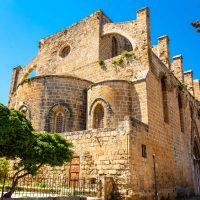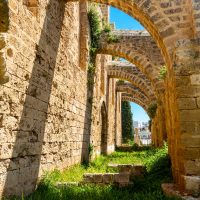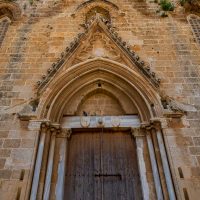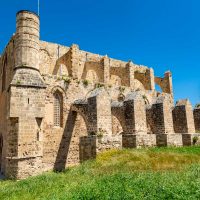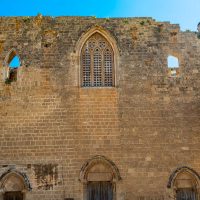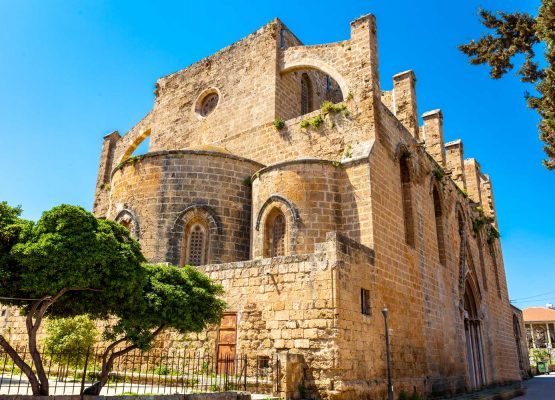
Immense Ugly Church!
The magnificent facade of this mammoth 14th-century church provides a great notion of what Famagusta would have looked like before most of its churches and monuments were ruined.
Behind the Venetian Palace in the town centre, you will find the glorious flying buttresses of the renamed Ottoman Sinan Pasha Mosque.
The foundations of one of the largest Gothic cathedrals in Famagusta, the initial church of Saint Peter and Saint Paul were laid in the Lusignan reign of Peter I, 1358 – 1369, and funded by one third of the profits made on a single trip to Syria by a wealthy merchant of Famagusta, Simon Nostrano.
The church walls are supported by heavy flying buttresses, in place to drain the pressure away from the interior vaulting, but only on the upper level. They, like the wall itself, are enormously thick and sturdy, presumably to resist the disastrous effects of earthquakes. The later substantial buttressing added on the south side dates to after the two sixteenth century earthquakes which threatened the structure in its entirety.
As a result of these modifications, the church does not have the same radiance from its more delicately constructed French contemporary counterparts. Indeed, George H. Everett Jeffery who was the Curator of Ancient Monuments in Cyprus in the early 20th century summarises its appearance – “Nothing could be uglier or more opposed to the beauty of true Gothic architecture than the exterior of this immense church.”
The beauty of this church rests almost entirely in its refined and elegant interior perspective.
Gothic arches rise above the rhythmic succession of bays, from plain circular piers with undecorated capitals. From the abacus of each pier are three colonettes, merged into the wall, which rising to the clerestory level, fan out to cover the nave and create the cross vaulted ceiling, which gather at roof bosses of floral design and which often bear coats of arms.
Remnants of Gothic sculpture, unidentified renaissance martyrdoms, post-Renaissance maritime graffiti, all offer tantalising fragments and a rare insight into a now forgotten period of wealth and influence in the history of Famagusta.
The building became disused during the Venetian period, as it escaped the attention of the Ottoman bombardment of the city in 1571. After their conquest, the Ottomans added a minaret to the south west corner and renamed the edifice Sinan Pasha Mosque, after “Sinan the Great” who served five times as Grand Vizier in the Ottoman empire.
During the British era of the island, the mosque was used as a potato and grain store and so is also locally referred to as the “Bugday Cami” (wheat mosque).
In the southern courtyard, underneath the second row of buttresses, you will find the grave of Yirmisekiz Celebi. Mehmed Efendi, was an Ottoman statesman who was delegated as ambassador by the Sultan Ahmed III to Louis XV’s France in 1720. he became to be known by the nickname Yirmisekiz (“twenty-eight” in Turkish) for his entire life, since he had served in the 28th battalion of the first modern standing army in Europe. He died in exile at Famagusta in 1732.


